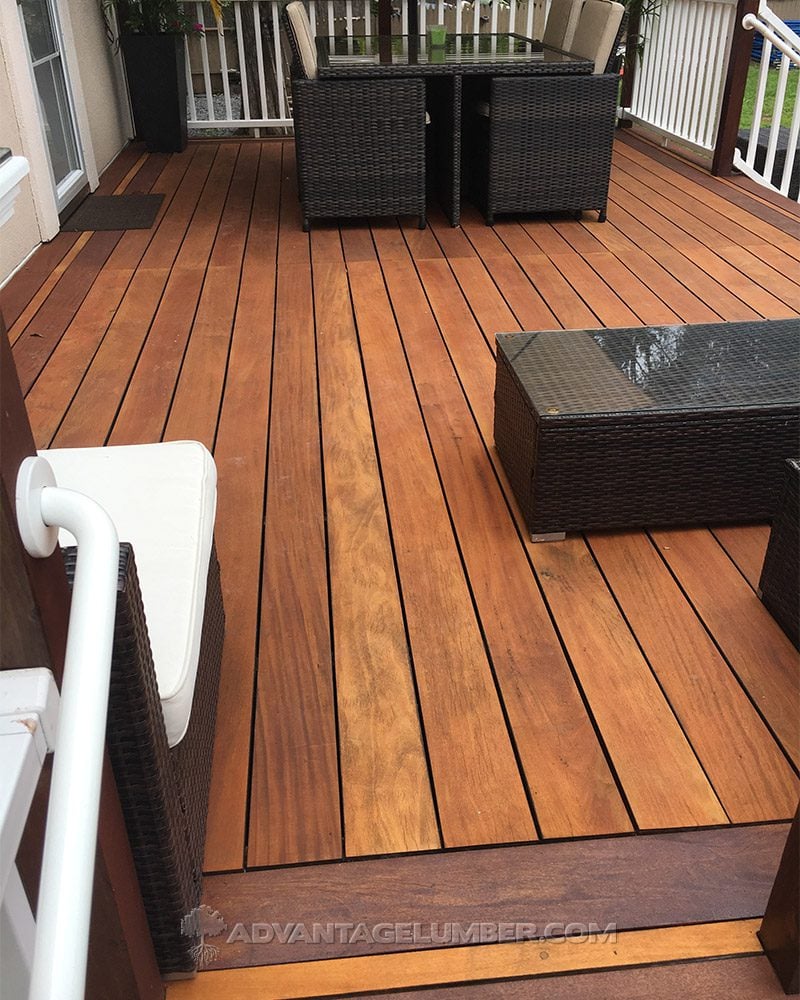When building a deck, one of the most common questions is whether to leave gaps between deck boards. The answer depends on the type of deck, its exposure to the elements, and the materials used. Let’s break it down to help you make an informed decision.
Why Gaps Are Important for Most Decks
For any deck that isn’t fully covered by a roof—meaning it’s exposed to rain, snow, or other moisture—gaps between deck boards are essential. These gaps allow water to drain through the deck, preventing pooling, which can lead to wood rot, mold, and cupping. Proper drainage also reduces the risk of slippery surfaces, making your deck safer. Typically, a gap of 1/8 to 1/4 inch is recommended, depending on the material and local climate.
When Can You Install Deck Boards Without Gaps?
The only time you can install deck boards tightly together, such as with tongue-and-groove (T&G) decking, is on covered porch decks that are fully protected from the elements. These decks are shielded from direct moisture, so water drainage isn’t a concern. T&G decking creates a seamless, polished look, but it’s not suitable for open-air decks where water exposure is inevitable.
Special Considerations for Pressure-Treated Deck Boards
If you’re using pressure-treated deck boards, you might notice they’re often installed tightly together with no initial gaps. This is because pressure-treated wood is typically very wet when delivered, as it’s infused with chemicals to resist rot and insects.
When installed wet, these boards will naturally dry out over time under sun exposure, causing them to shrink. This shrinkage creates the necessary gaps for drainage, usually within a few months. So, while you may start with a “gapless” deck, nature will take care of creating those spaces as the wood dries.
Hardwood Decking: Gaps from the Start
When building with high-quality hardwoods like Ipe, Cumaru, Tigerwood, Garapa, or Teak, the approach is different. These premium woods are dried appropriately before delivery, meaning they arrive at a stable moisture content.
Unlike pressure-treated wood, they won’t shrink significantly after installation. For this reason, hardwood deck boards must be installed with gaps from the start to ensure proper drainage and to accommodate any minor expansion or contraction due to humidity or temperature changes. A consistent gap (often 1/8 inch) is critical to maintaining the longevity and beauty of these durable, investment-grade materials.
Key Takeaways
- Uncovered decks: Always leave gaps between deck boards to allow water to drain and prevent damage.
- Covered porch decks: Tightly installed T&G decking is acceptable since water exposure is minimal.
- Pressure-treated wood: Can be installed tightly when wet, as drying will create gaps naturally.
- Hardwoods (Ipe, Cumaru, etc.): Require gaps from the start due to their pre-dried state.
Final Thoughts
Leaving gaps between deck boards is a critical consideration that depends on your deck’s design and materials. For most outdoor decks, gaps are non-negotiable to ensure proper drainage and longevity. By understanding how your decking material behaves—whether it’s pressure-treated wood that shrinks over time or pre-dried hardwoods that need immediate spacing—you can make the right choice during installation. A well-planned deck not only looks great but also stands the test of time, rain or shine.
If you’re unsure about the specifics for your project, consult with a professional deck builder to ensure your deck is built to last. Happy decking!

